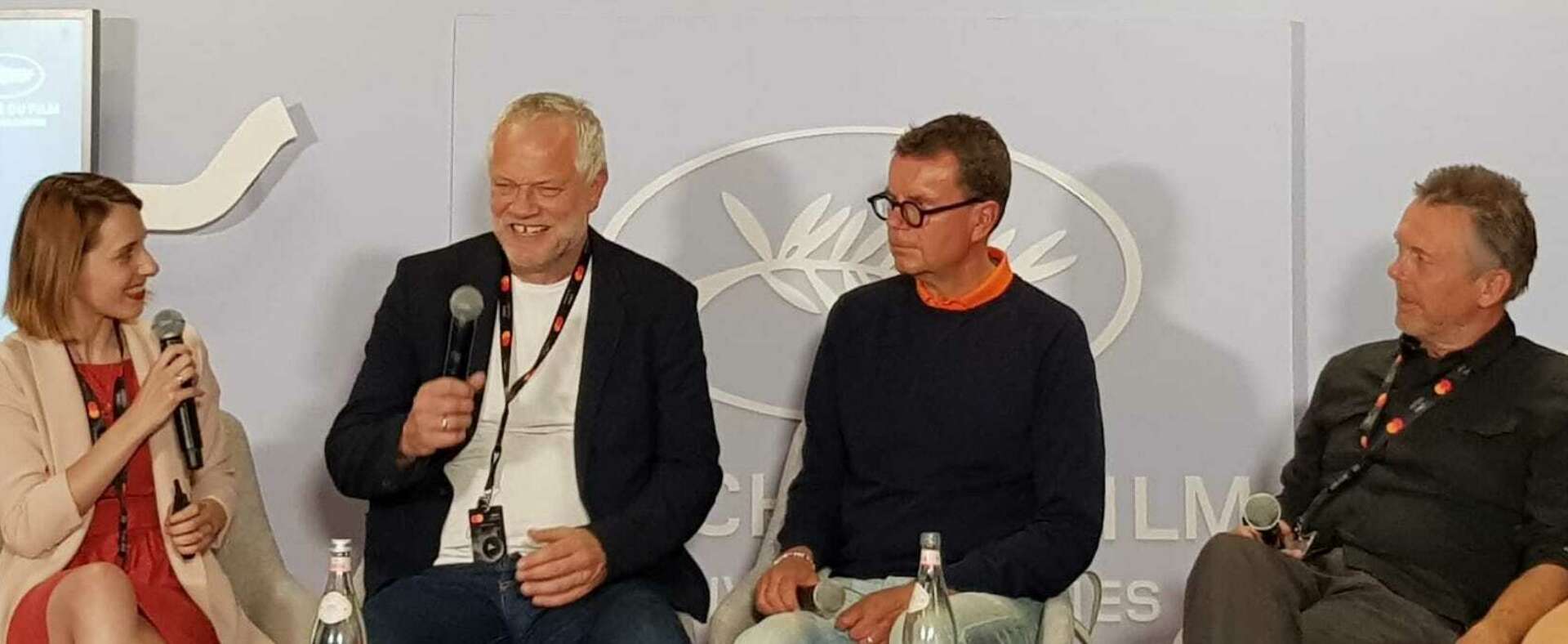WRITTEN BY: Annika Pham
At a panel held in Cannes, Camera Film’s Kim Foss, SF Studios’ Robert Enmark, Zentropa’s Anders Kjærhauge advocated freedom of choice to create and display quality films.

At a panel held in Cannes, Camera Film’s Kim Foss, SF Studios’ Robert Enmark, Zentropa’s Anders Kjærhauge advocated freedom of choice to create and display quality films.
Last week the Marché du Film in Cannes was a hotspot for industry talks about the future of cinema-going in a disrupted global marketplace and the need for European players to defend the quintessential cultural diversity.
At the panel ‘Projecting Progress: how best to cultivate and grow audiences in a dynamic and diverse film landscape’ organised by the European associations CEPI, FIAD, FIAPF, IVF, UNIC representing producers, distributors and exhibitors, the industry guests first saluted the clear positive signs of recovery of the theatrical market post-Covid.
According to figures released by the European Audiovisual Observatory in its latest Focus-World Film Market Trend, cinema attendance and B.O. in 2022 in the EU and the UK were just one third lower than pre-pandemic average, and up 63% and 70% respectively compare to 2021.
In 2023 the positive trend will continue, with B.O. for Q1 2023 in the EMEA region estimated to climb 32% year on year, and to return to pre-pandemic levels by 2024, according to data presented at the panel by moderator Laura Houlgatte, CEO of UNIC (The International Union of Cinemas).
“The market today is pretty good,” said SF Studios’ Head of International Acquisition Robert Enmark, who also admitted that 2-3 years ago, he was pessimistic for the indie distribution sector and has now a more positive outlook.
Kim Foss, the seasoned Danish arthouse distributor, who runs Camera Film, Copenhagen’s Grand Teatret, and a streaming service with 1,000 titles, said: “we’re back being weather-dependent and content-driven.”
Zentropa’s CEO Anders Kjærhauge voiced the same faith in cinema-going. “During Covid, we did put a few films in the cinemas [Riders of Justice and Another Round] and found out that if you create good films, with cinematic quality, people will come!”
The Nordic panellists pointed out that the diversity of films in Europe stems both from the dynamic ecosystem in place, and the entrepreneurial spirit that runs through the sector, with indie distributors playing a central role as co-financiers of around 70% of European films, according to UNIC.
“What drives us is passion and gut feeling”, said Foss who cited the mantra for film acquisition of “If you cry [when watching a film] then buy it!”
“The audience recognises when you run a cinema, curate a programme of high-end arthouse films, bring the best coffee to customers. We need to have this approach,” he stated.
For Kjærhauge, the same passion for film and energy that exists in the filmmaking process, is recognisable in the final film, and acts as one of Zentropa’s recipe for success. “There is something about the energy between the crew, the talent, the director that transpires in the films. Making good films is not only about numbers. It’s about the art-form of filmmaking, which is why we believe in talent and try to be clever as producers to create blockbusters and movies that reach their target group - and beyond.”
The speakers also emphasised the need for freedom of choice to take risks on diverse stories and their production models, and freedom to create local and tailor-made marketing strategies to reach the target audience, with cinemas as an essential window.
“What is key is the individual film’s artistic quality and diversity across all films in Europe, said Kjærhauge who doesn’t view favourably rigid parameters on a film-by-film basis to define diversity and EU regulators’ intervention.
“We want more dialogue with politicians” added Enmark who together with Foss, defended indie distributors’ freedom to set their own goals on a local level regarding film marketing and distribution strategies.
Asked by Houlgatte about new ways to attract audiences, Kjærhauge cited film literacy as a key component. “What about creating film drop offs, instead of sports drop off and clubs? It’s a good way to get kids addicted from an early age,” he suggested. “We should also consider increasing our spend on social media. Some producers are good at it but others are still old fashion,” he noted.